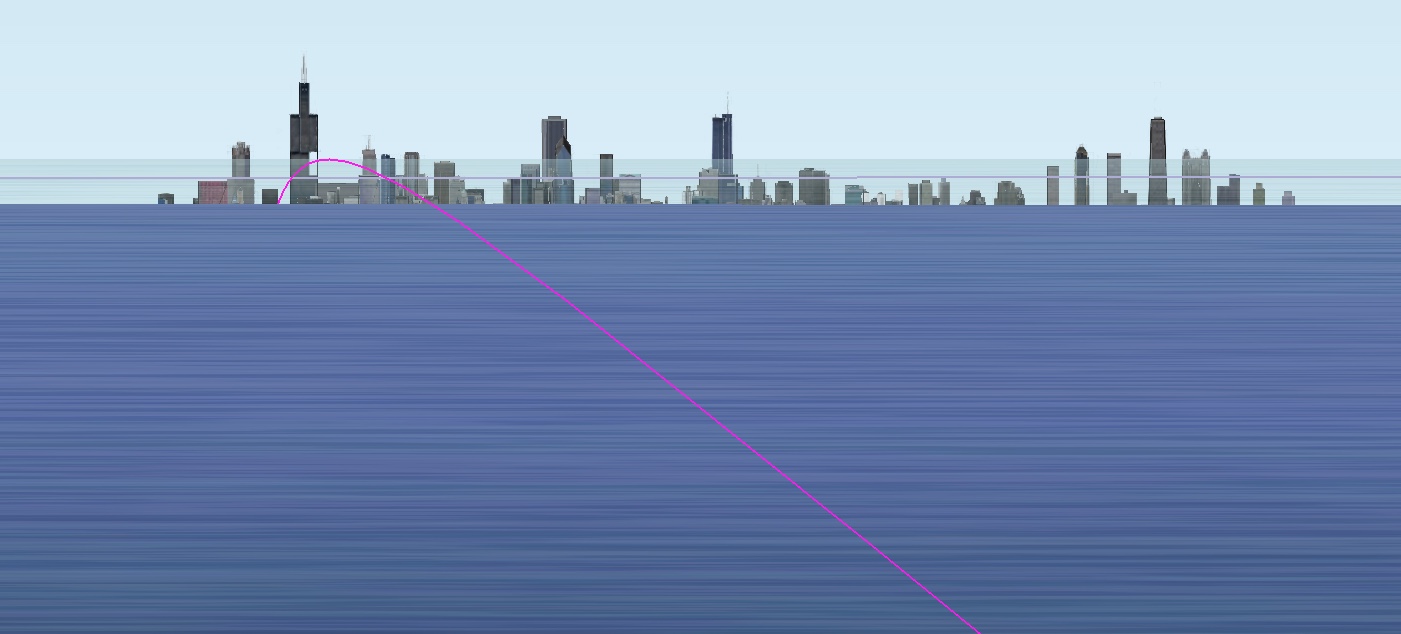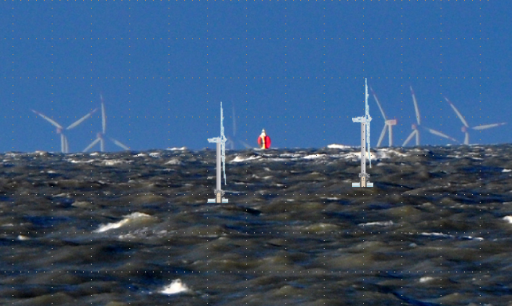A Fata Morgana is often rapidly changing. The mirage comprises several inverted (upside down) and erect (right side up) images that are stacked on top of one another. Fata Morgana mirages also show alternating compressed and stretched zones.
[1]
This
optical phenomenon occurs because rays of light are bent when they pass through air layers of different temperatures in a steep
thermal inversion where an
atmospheric duct has formed.
[1](A thermal inversion is an atmospheric condition where warmer air exists in a well-defined layer above a layer of significantly cooler air. This temperature inversion is the opposite of what is normally the case; air is usually warmer close to the surface, and cooler higher up.)
In calm weather, a layer of significantly warmer air can rest over colder dense air, forming an atmospheric duct which acts like a refracting
lens, producing a series of both inverted and erect images. A Fata Morgana requires a duct to be present; thermal inversion alone is not enough to produce this kind of mirage. While a thermal inversion often takes place without there being an atmospheric duct, an atmospheric duct cannot exist without there first being a thermal inversion.
...
A Fata Morgana superior mirage of a ship can take many different forms. Even when the boat in the mirage does not seem to be suspended in the air, it still looks ghostly, and unusual, and what is even more important, it is ever-changing in its appearance. Sometimes a Fata Morgana causes a ship to appear to float inside the waves, at other times an inverted ship appears to sail above its real companion.
In fact, with a Fata Morgana it can be hard to say which individual segment of the mirage is real and which is not real: when a real ship is out of sight because it is below the horizon line, a Fata Morgana can cause the image of it to be elevated, and then everything which is seen by the observer is a mirage. On the other hand, if the real ship is still above the horizon, the image of it can be duplicated many times and elaborately distorted by a Fata Morgana.













